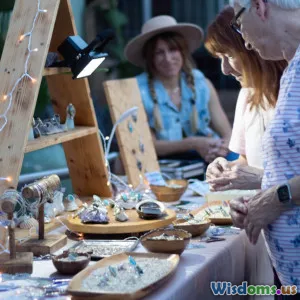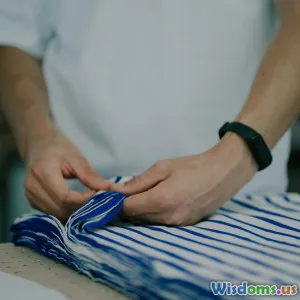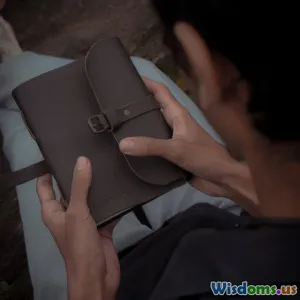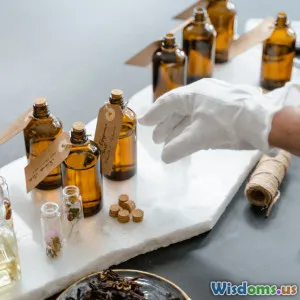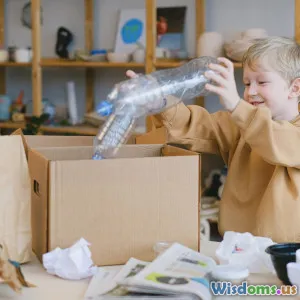
Upcycling Ideas for Everyday Items
8 min read Discover creative upcycling ideas to transform everyday items into stylish, functional pieces while reducing waste and saving money. (0 Reviews)
Upcycling Ideas for Everyday Items: Give Your Trash a New Life
Upcycling has become a popular, eco-friendly approach to sustainability, creativity, and even cost savings. Instead of discarding worn-out or unused household items, upcycling inspires us to breathe new life into them by transforming them into something useful, beautiful, or simply fun. This practice not only diverts waste from landfills but cultivates a mindset of resourcefulness and innovation. If you have everyday items lying around that seem destined for the trash, read on—this article will explore inventive ways to upcycle ordinary objects, with actionable ideas and examples.
Why Upcycling Matters
The global waste crisis is escalating rapidly; according to the United Nations, around 2 billion tons of waste are generated worldwide each year. Much of it comes from everyday discarded items such as glass jars, old textiles, electronics, and furniture. Upcycling helps extend the lifespan of these materials, mitigating environmental impacts by reducing demand for virgin resources and diminishing greenhouse gas emissions associated with production and disposal.
Climate-conscious designer and author Orsola de Castro famously said, “Fashion is the second most polluting industry, and the first is plastic production.” While her insight focuses on fashion, the message holds true across all industries—upcycling can dramatically reduce pollution by giving materials a second life.
Clever Upcycling Ideas for Everyday Items
1. Glass Jars: From Storage to Style
Empty glass jars are among the most versatile items you can upcycle. Their durability and transparent nature lend themselves to various creative uses:
- Planters & Terrariums: Fill jars with soil and succulents or create miniature ecosystems with moss, stones, and tiny plants. These mini gardens brighten interior spaces with minimal maintenance.
- Organizers: Use jars to store craft supplies, kitchen herbs, or office essentials. Adding colored sand or pebbles at the base can inject decorative flair.
- Lighting Fixtures: Convert jars into lanterns or pendant lamps by adding string lights or LED tealights. The ambient glow enhances coziness.
These projects require no special skills and only small investments in paint, twine, or soil, making them beginner-friendly.
2. Old T-Shirts: From Wardrobe Clutter to Functional Accessories
Those worn-out t-shirts can be transformed into:
- Reusable shopping bags: With simple cuts and knots, shirts become eco-friendly bags that reduce plastic use.
- Rugs or Mats: Braided or knotted fabric strips become colorful floor mats.
- Pillows and Cushions: Cut and sew multiple shirts into unique pillow covers featuring your favorite colors or slogans.
Studies show that textile waste accounts for 5% of municipal solid waste globally. Upcycling clothes helps tackle this growing issue.
3. Wooden Pallets: Rustic Charm in New Forms
Pallets, often discarded by retailers, are prized among DIY enthusiasts for their sturdy wood and rustic appeal.
- Furniture: Coffee tables, shelves, headboards, and outdoor garden benches crafted from pallets combine durability with style.
- Garden Planters: Vertical pallet planters maximize small-space gardening, perfect for patios or balconies.
- Wall Art and Decor: Cut and stain pallet wood to create custom signs or photo displays.
Professional pallet upcycle artists have even entered fine art exhibitions, proving the potential of this humble material.
4. Tin Cans: Mini Makeovers with Big Impact
Received a can of coffee or canned tomatoes? Rather than tossing, clean and transform tins into:
- Desk Organizers: Paint and add dividers to hold pens, markers, and scissors.
- Outdoor Lanterns: Punch holes to create patterns for candlelight.
- Bird Feeders: Attach a base and hang from trees to attract feathered friends.
Tin can upcycling requires minimal tools and is a fantastic way to introduce kids to creative reuse.
5. Broken Furniture: Fixes and Reimaginings
Before discarding a scratched table or creaky chair, explore possibilities:
- Refinishing: Sanding and repainting can restore beauty and function.
- New Purposes: Turn a damaged dresser into a bathroom vanity or bookshelves.
- Parts Salvage: Repurpose wood, knobs, and hardware to craft picture frames or garden trellises.
Remarkably, the EPA estimates that furniture disposal contributes to millions of tons of landfill waste annually. Small restoration or repurposing efforts cumulatively make a big difference.
How to Get Started with Upcycling
- Assess what you have: Identify items around your home gathering dust or destined for the bin.
- Research and plan: Seek inspiration from blogs, Pinterest boards, or YouTube tutorials relevant to your interests.
- Start small: Choose projects that match your skill level and available tools.
- Gather supplies: Basic crafting materials like glue, paint, brushes, and scissors usually suffice.
- Collaborate: Upcycling can be a social affair—work with friends or family to increase creativity and fun.
Benefits of Upcycling: Beyond the Environment
While environmental benefits are significant, upcycling also yields:
- Economic savings: Lower spending on new products.
- Unique items: Custom, personalized pieces with character and history.
- Mindfulness and satisfaction: The joy and stress relief of hands-on creativity.
Environmental psychologist Dr. Linda Woodhouse emphasizes creativity’s role in well-being: "Engaging in creative activities such as upcycling promotes positive emotions and helps build a sense of accomplishment."
Conclusion: Transforming Trash into Treasure
Upcycling is more than a trendy buzzword; it embodies a practical, artistic, and ethical way of living that can make measurable impacts on environmental sustainability and personal satisfaction. The ideas shared here—reworking jars, textiles, wood, and metal—are just a fraction of what’s possible. By beginning with small, achievable projects, you step into a world where your discarded items gain new purpose, your home becomes enriched with distinctive flair, and you contribute to conserving precious resources.
Remember the words of creative innovator William Morris: “Have nothing in your homes that you do not know to be useful or believe to be beautiful.” Upcycling allows us to fulfill that vision boldly and beautifully. So grab that old t-shirt, those empty jars, or broken furniture, and start transforming your everyday items today.
Embrace creativity, sustainability, and personal empowerment through the art of upcycling.
Rate the Post
User Reviews
Popular Posts
















